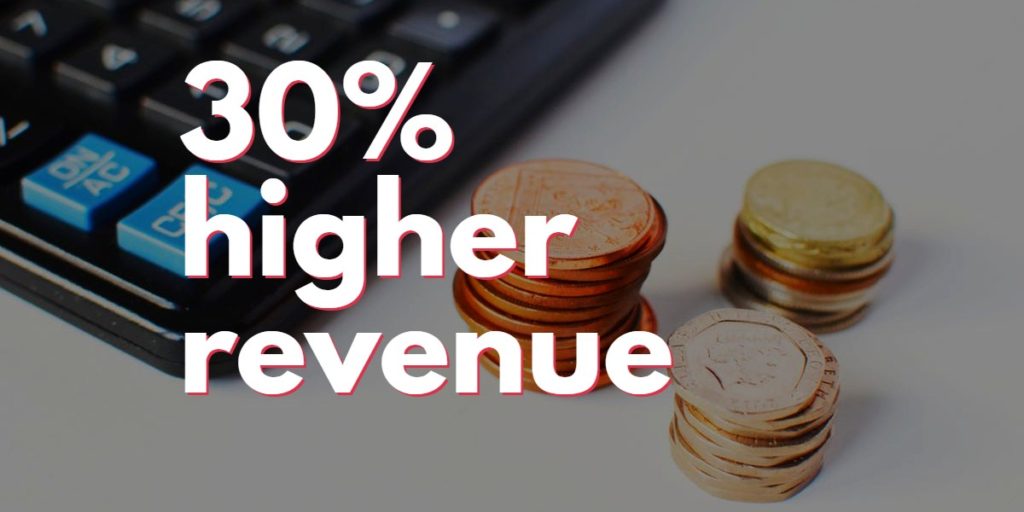As per Forbes, loyalty programs lead to around 30% increase in customer lifetime value, by increasing number of visits, spend per visit and getting back the lost customers.
We have seen that a lot of businesses raise their products or services’ prices when they seek for the ways to increase their revenue. This practice is no longer valid as today’s customers are more aware than ever before, more price-savvy and more efficient in their spending.
So, instead of raising the prices and facing the threat to lose customers, try these three ways to maximize to your revenue;
- increase customer retention
- increase per customer purchase frequency, and
- increase the average transaction volume.
Well, that sounds a hefty objective, Doesn’t it? The good news is that you can achieve all these three elements through a single customer engagement strategy; we call it a customer loyalty program.
Building Customer Loyalty & Improve Retention

Establishing customer loyalty in today’s competitive markets is difficult. The digitally empowered customers are not hesitant to take their interest elsewhere within a matter of minutes. Access Development, a research company, reported that 79% of the customers are likely to take their business to a competitor within a week they start experiencing unsatisfactory customer service from a business, and the estimated cost of the customers switching from a business to its competitor because of a poor service, is around $1.6 trillion.
What Is CX Transformation? | Quadient https://t.co/PrZpT7r0S8 pic.twitter.com/XVxWljiU9o
— Will Corry (@slievemore) August 10, 2018
Today’s customers are bombarded with never ending choices not just in terms of brands but also pricing, discounts and promotions and customer services – all developed to influence their choice. A strategically developed and well-executed loyalty program brings tangible incentives for the customers to purchase while also infusing a better sense of brand awareness in the customer base.
Loyalty Programs are Everywhere
Almost all industries have been embracing the potential of an effective loyalty program to retain existing customers and acquire new ones, to encourage repeat business and increase sales.
– Travel Industry
 Mintel & AAA study reveals:
Mintel & AAA study reveals:
- 54% of the customers appreciated the complementary GPS device
- 47% of the customers wanted flexible return locations
- 33% of the customers liked complimentary transport services
The Virgin Experience Days has been practicing various loyalty programs for a long time. One way they reward their customers is by sharing with them the opportunities for discounts on their future purchases. The loyalty programs especially take into consideration the “favorites” of the customers.
– Restaurant & Hospitality Industry
Deloitte says that 85% of the diners in the U.S would like to avail the loyalty program at their favorite restaurant if they get it for free.
Another case from this industry: If you have not read about Starbucks’s loyalty program, you are surely missing on a great piece of learning. The Starbucks app is an ideal example of a successful and effective digital loyalty program.
The Starbucks app lets users earn stars for every order they place and redeem them in real-time, encouraging customers to come back on a repeated basis. The app brought 20 million global members to Starbucks that let the company to escalate its revenue and invest more in its customers.
– Healthcare Industry
 Fallon Health, a Massachusetts-based health insurance and health care service provider, partnered with Forrester Research to determine customer expectations and make more personalized offerings. In addition, it is also using solutions like VOC programs as well as journey mapping tools to drive customer loyalty.
Fallon Health, a Massachusetts-based health insurance and health care service provider, partnered with Forrester Research to determine customer expectations and make more personalized offerings. In addition, it is also using solutions like VOC programs as well as journey mapping tools to drive customer loyalty.
Dentacoin, the world’s first blockchain-based solution for global dental industry, has introduced a new concept of loyalty program in the dental care sector. Dentacoin works in favor of both healthcare service providers and patients, serving as a platform to generate valuable patient insights for dentists and help them establish a loyal patient base. At the same time it rewards patients for participation with cryptocoins.
Thousands of patients are giving reviews on Dentacoin’s decentralized trusted review platform and earning Dentacoin (DCN) as rewards. They can also take dental health related surveys on DentaVox or establish oral hygiene habits through Dentacare Mobile app. These coins can be redeemed for dental services, can be stored or exchanged with other currencies.
Conclusion



 It seems like tailoring company objectives to customers’ changing expectations is no longer a choice.
It seems like tailoring company objectives to customers’ changing expectations is no longer a choice.